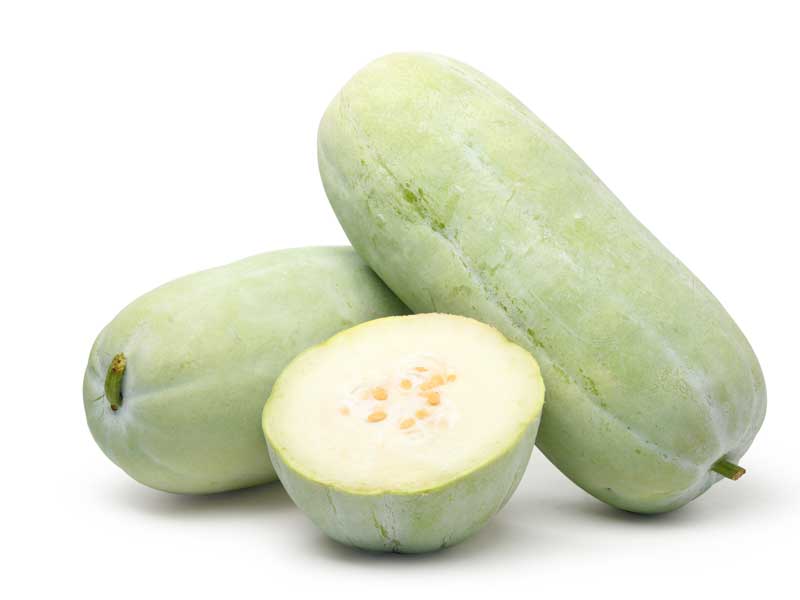Wax gourd, also known as winter melon or ash gourd, is a large, waxy-skinned fruit used in Chinese, Indian, and Southeast Asian cooking. Despite its name, it thrives in warm summers and can store for months—making it an ideal vegetable for home gardeners in Australia’s warmer climates.
What Is Wax Gourd?
Botanical Name: Benincasa hispida
Also Known As: Winter melon, ash gourd, petha (Hindi), don qua (Chinese), ma-pao (Thai)
Wax gourd is a member of the cucurbit family and produces large, round or oblong fruits with pale green skin that develops a natural waxy coating when mature. The flesh is mild, white, and firm, often cooked in soups, stir-fries, and traditional sweets. The plant grows as a sprawling vine with large leaves and yellow flowers.
Quick Growing Info
| Category | Details |
|---|---|
| Plant Type | Annual trailing vine |
| Climate Zones | Tropical, Subtropical, Warm Temperate |
| Sowing Season | Spring to early summer (Oct–Dec) |
| Days to Harvest | 100–120 days |
| Spacing | 100 cm between plants |
| Sunlight | Full sun (6–8 hours) |
| Soil pH | 6.0–6.8, rich and well-drained |
| Support Needed | Yes – strong trellis or allow to sprawl |
How to Grow Wax Gourd from Seed
Soak seeds overnight and sow directly into warm soil or start in pots for transplanting. Provide 1 metre of spacing and plant in well-drained, compost-rich soil. Use mulch to retain moisture and reduce weeds. Wax gourd is a heavy feeder, so side-dress with compost or use a balanced fertiliser fortnightly during early growth.
As the vine develops, guide it onto a trellis or give it room to sprawl across mulch or weed mat. Train the fruit off the ground to avoid rotting.
Pollination
Wax gourd produces separate male and female flowers. Bees usually pollinate naturally, but hand-pollination improves fruit set in smaller gardens. Use a soft brush to transfer pollen from male to female flowers in the morning.
Common Problems and Fixes
| Problem | Cause | What to Do |
|---|---|---|
| No fruit forming | Poor pollination | Hand-pollinate female flowers early morning |
| Leaves turning white | Powdery mildew | Improve airflow, water at base, use eco-fungicide |
| Tiny insects under leaves | Aphids | Spray with neem or horticultural soap |
When and How to Harvest
Harvest wax gourd when the skin develops a white, waxy coating and the fruit feels heavy and hollow when tapped. Use sharp shears and leave a short stem attached.
Fruits can be stored for months in a cool, dry place and are excellent for preserving or use through winter.
How to Use Wax Gourd in the Kitchen
- Wax Gourd Soup: Simmer cubes in broth with ginger, garlic, and pepper. Popular in Chinese cuisine.
- Stuffed Wax Gourd: Slice thick rings, hollow out, and stuff with pork mince, soy sauce, and mushrooms before steaming.
- Petha (Indian Sweet): Boil, soak in syrup, and crystallise for a winter dessert.
References and Further Reading
More in This Series
This post is part of our Asian Edible Gourd Series. Learn about other varieties:


